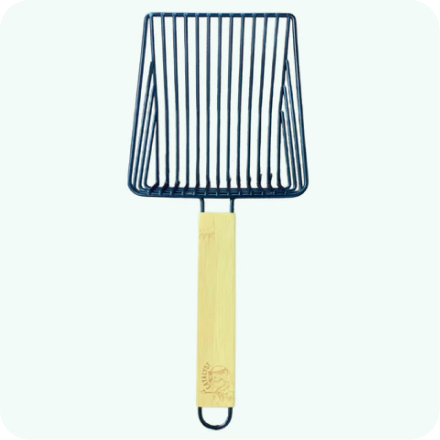There’s nothing better than a new kitten or cat to add to your household. For those who are cat parents for the first time, you probably have a lot of questions especially when it comes to their “bathroom.”
Let’s start with the foundation, litter-ally: how much litter is needed per month, frequency of litter box cleaning, and some additional must-have tools. Obviously, there are variables based on your individual cat and the type of litter you’re using – but here are some great rules of paw to consider when determining your needs.
Litter and Litter Box Etiquette:
The litter box isn’t the sexiest topic, but it’s arguably the most important when you’re bringing a new cat home. Setting your kitty up for success with litter box use will ease the transition into your home for you and your pet. A bad litter situation is no fun for both you and your fur baby!
Also, consider location, location, location! Make sure the litter box is easily accessible, conveniently located, and pleasant to use. As soon as you bring your cat home, gently place him or her in the litter box, allowing time to scratch and sniff this new environment. Experts recommend at least one litter box on each level of your home, placed away from where your cat food and drink are, as well as away from noisy or heat-producing appliances. If the box is too far removed in a cold, dark corner of your home, your kitty may be less inclined to use it.
Also, if you have multiple cats, ensure each cat has at least one dedicated litter box, plus one extra in your home, just in case.
You may also be wondering how much litter you’ll need weekly, monthly, and beyond. This depends on the type of litter, as well as how many cats you have. As a general rule of thumb, you’ll need less clumping cat litter than non-clumping and more natural litter whether it’s clumping or non-clumping. However, this can vary a lot between brands. Users of clay litter can go through 40 lbs per month per cat. Catalyst Pet’s litter has higher absorbency, so we recommend 10 lbs of litter, per cat per month. Also, kittens usually need less litter than adult cats.
How much litter should you pour into the litter box? We humans tend to think that more is better, but not in this case. Typically, you should fill the box with 2-3 inches of litter. Some cats might prefer a little more, which is fine; however, if your litter box is too full, your cat may dig and hide their poop, which could cause odors that your cat will likely notice before you do. If there’s not enough litter, the smell can become overpowering for you and your kitty after just a few uses.
Frequency of Cleaning
You’re probably wondering how often to change the litter and clean the litter box. First and foremost, trust your nose! If the litter box is stinky, definitely change it, even if it seems like you just cleaned. After that, get into a cleaning schedule – write it down or set an alarm on your phone as a reminder.
Scoop the solid waste at least once per day – cats love a clean litter box, and some will find other places to eliminate if the litter box is not clean, which can be a tough habit to break once it starts. Add litter whenever the box gets lower than 2-3 inches, and fully change out the litter at least once per week.
Once per month, the entire litter box should be deep cleaned and refilled with new, fresh litter. It’s best to avoid using scented cleaner, as cats are incredibly sensitive to smell and may not appreciate strong odors, even if they are pleasing to humans! This is not just a good practice for cleaners. Some cats prefer unscented litter, too, such as Catalyst Pet’s unscented litter.
And as an added bonus, pay attention to what you’re scooping. The look and smell of what you’re removing from the litter box can provide insights into your cat’s health and alert you of potential issues that may otherwise go undetected.
Necessary Tools!
In addition to litter, it’s also important to find the right type and size of litter box. A litter box with higher sides helps keep litter where you want it – and that’s in the box. It can also make your cat feel safe and protected while doing their business.
There are a variety of litter boxes available to order online, with colors, sizes, and features to fit your specific needs! This high-sided litter box could be a great fit for your kitty. For older cats or kittens, who can’t jump as high or as easily, this litter box has great reviews.
A good scoop is important too. Find a slotted scoop that is both lightweight and durable. We’re a bit biased, but we like this one, which is specially designed to be a perfect counterpart to a natural litter. A wider scoop allows easy sifting after scooping, ensuring any unused litter goes right back into the box without wasting.
A tracking mat outside the box – because tracking happens! – can minimize litter tracking around your home. This sisal tracking mat is soft on your cat’s paws, traps litter, dust, or dirt, and it’s machine washable! (Again, we’re biased because it’s ours, but we recommend it based on extensive testing in our cat lab).
What else?
Once you have a handle on your cat’s litter box habits and a good estimate of how much litter you need, setting up a monthly litter subscription is a great idea and one offered by many companies, including Catalyst Pet. This allows you to spend less time buying products and more time with your furry friend.
And finally, enjoy! Cheers to joining the elite Cat Parent Club! 🐾 Prepare for endless purrs and furry cuddles!"











